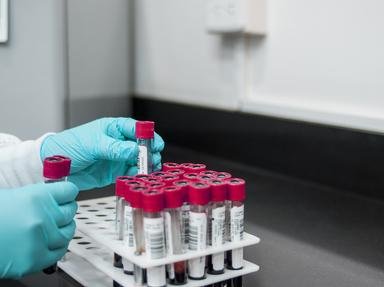Quiz Answer Key and Fun Facts
1. In organic chemistry, the reactions of many molecules are dependent upon the functional group. The functional group can also affect physical properties. What characteristic of a carboxylic acid gives the molecule a much higher boiling point than many other molecules of similar molecular weight?
2. The carboxyl group (R-COOH or R-CO2H) is one of the two functional groups that is present on the building blocks of protein, amino acids. The second functional group on an amino acid is the amine group (R-NH2) and this along with the carboxyl group allows an amino acid to exist as a what?
3. A carboxylic acid can be used to derive many different organic molecules. For example, a primary alcohol such as ethanol can be synthesised by reducing a carboxylic acid. What is the essential reducing agent used in this organic reaction?
4. Organic chemistry is really a series of connections and there is often more than one way to synthesise a particular compound. The answer to this question is one such example. You can reduce a carboxylic acid to a primary alcohol and you can oxidise that primary alcohol back to a carboxylic acid. However, what organic compound do you get when you react a carboxylic acid with an alcohol?
5. Sometimes the field of organic chemistry can be confusing and a perfect case illustrating this is the difference between an alcohol and a phenol. When you look at the functional groups in each of these molecules, diagrammatically they look very similar. However there are some differences which make the two groups react quite differently. Which of these two groups is distinguished by the formation of a purple complex when neutral iron (III) chloride is added?
6. Organic chemistry is known for its complicated diagrams and also for its many mechanisms. What type of reaction has taken place if chlorobenzene (C6H5Cl) has been synthesised from an initial molecule of benzene (C6H6)?
7. Many of the series of compounds that constitute the field of organic chemistry contain the same functional group. The group in question is 'C=O' which is essentially a double carbon to oxygen bond with two side groups attached to the carbon atom. What is the name of this functional group?
8. Nitrobenzene (C6H5NO2) can be used in a reaction to synthesise a compound known as phenylamine (C6H5NH2). In this reaction, which of the following is used in some form?
9. In general, the first two organic families that a student of chemistry comes across are the alkanes and the alkenes. Which of these two contain a double carbon to carbon bond?
10. Amino acids are essential to life in that they are what make up proteins. Without proteins, the world as we know it would be a barren, lifeless entity. Amino acids can "join" together to form chains of amino acids. What is the bond that is formed between two amino acids specifically called?
Source: Author
jonnowales
This quiz was reviewed by FunTrivia editor
crisw before going online.
Any errors found in FunTrivia content are routinely corrected through our feedback system.

